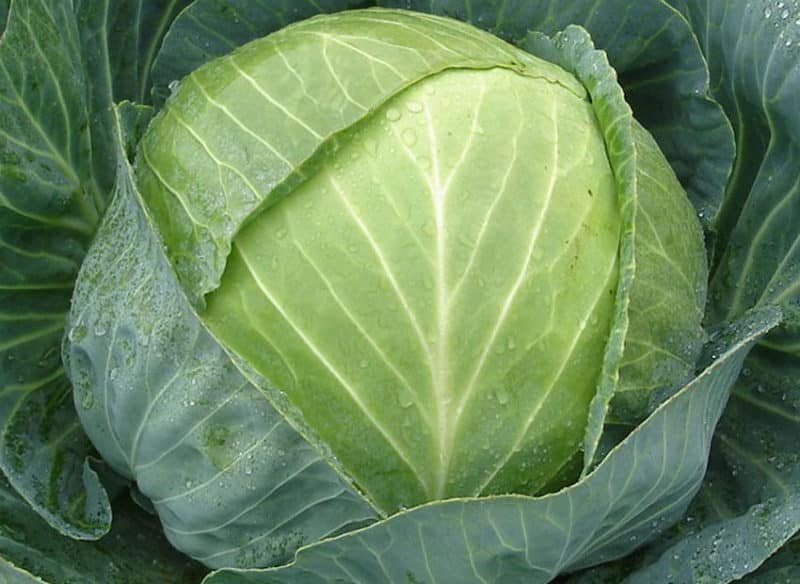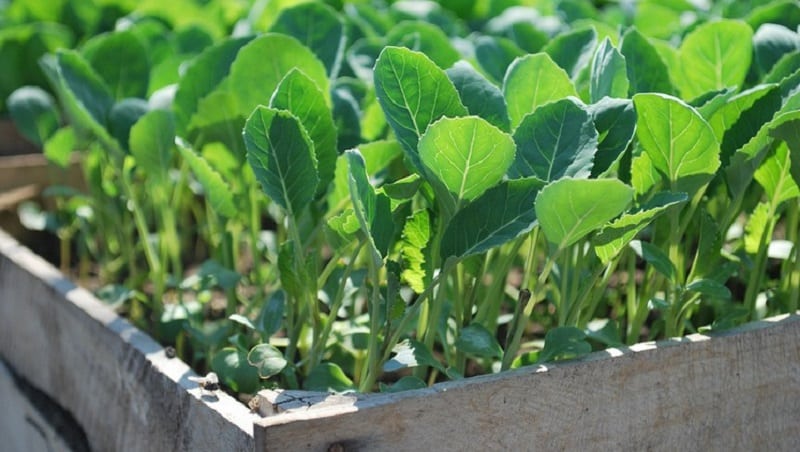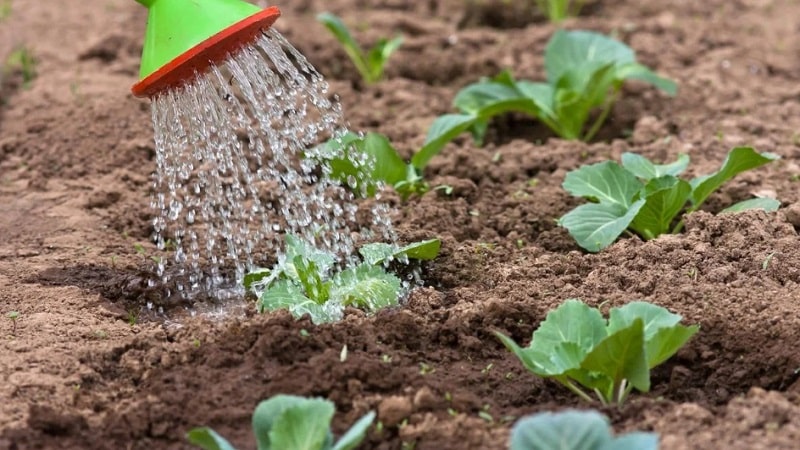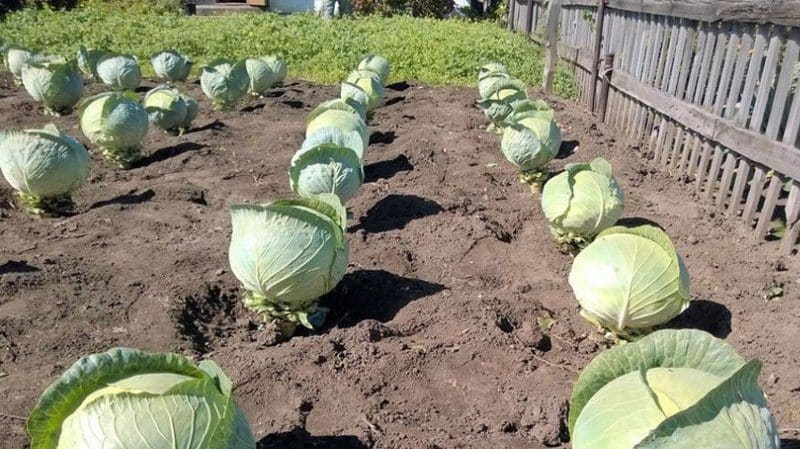Stable mid-season cabbage hybrid Centurion f1
The choice of gardeners in favor of Centurion cabbage is due to its positive qualities. They note the stable yield of the hybrid, its frost resistance, long-term storage and the possibility of cultivation in all areas. Let's talk about the advantages, disadvantages and nuances of growing Centurion.
Description of cabbage Centurion f1
The hybrid is the result of the work of French breeders. The plant forms dense, round heads of cabbage, which are characterized by juiciness and sweet taste, suitable for preparing various dishes and preparations for the winter.

Breeding history
The white cabbage hybrid Centurion f1 was bred by French breeders of the company HM.Clause. It was included in the State Register of Russia in 2010.
Chemical composition, trace elements and vitamins, beneficial properties
100 g of product contains:
- vitamin B5 – 0.2 mg;
- vitamin B6 – 0.1 mg;
- vitamin E – 0.1 mg;
- calcium – 48 mg;
- phosphorus – 31 mg;
- chlorine – 37 mg.
Cabbage juice has antiseptic and anti-inflammatory effects. The vegetable is used to normalize metabolic processes, for constipation, coronary heart disease, atherosclerosis, and kidney disease.
Features of application
Centurion cabbage is eaten fresh, stewed, fermented, pickled, and used to prepare borscht, salads, cabbage rolls and other dishes.
Ripening time and yield
This is a mid-late hybrid; technical maturity of the crop occurs 100-120 days after emergence.
Reference. When growing seedlings and picking, the ripening period is reduced by 2 weeks.
Productivity – 447-613 c/ha, maximum (in the Krasnodar region) – 653 c/ha.
Resistance to diseases, pests and frosts
The hybrid is resistant to fusarium and thrips, but it can be affected by:
- clubroot;
- blackleg;
- mucous bacteriosis;
- Phomasis;
- cabbage flies;
- aphid;
- cruciferous flea beetles;
- slugs;
- leaf beetles.
Seeds germinate at +5…+6°C, seedlings tolerate temperature drops down to -7°C. Heads of cabbage that have reached technical maturity are not afraid of the first autumn frosts.
Characteristics, description of the appearance of leaves and heads of cabbage, taste
Centurion is characterized by a developed rhizome and dense, leveled heads of round shape, weighing 1.7-2.5 kg, with short inner and outer stalks. When cut, the heads of cabbage are yellowish-white.
The leaf rosette is raised. The leaf blades are medium-sized, bluish-green, bubbly, with slightly wavy edges, covered with a waxy coating of medium intensity.
The cabbage is crispy, tender, juicy. The taste is sweet, there is practically no bitterness.
Reference. The plant reaches a diameter of 0.6-0.7 m and a height of 0.6 m.
Growing regions and climate requirements
The hybrid is included in the State Register with permission for cultivation in the North Caucasus region. Due to its unpretentiousness to climatic conditions, it is cultivated throughout Russia.
Advantages and disadvantages of the Centurion f1 hybrid
Advantages of a hybrid:
- high commercial quality and taste;
- density and compactness of heads of cabbage;
- possibility of universal use;
- no tendency to crack;
- abundant yield;
- resistance to frost and temperature fluctuations;
- transportability and keeping quality;
- immunity to certain diseases.
The disadvantages of Centurion include the tendency to be damaged by pests and the need for regular watering.
Difference from other varieties and hybrids
Comparison of Centurion with other mid-late hybrids:
| Hybrid | Head shape | Head weight, kg | Marketable yield, c/ha |
| Centurion | Round | 1,7-2,5 | 447-613 |
| Elastor | Round | 1-2,5 | 476-711 |
| Cheese | Round | 3-5 | 801-1038 |
| Cerox | Round | 2,2-2,6 | 406-750 |
Features of planting and growing
Centurion cabbage is grown in seedlings and without seedlings. Sowing seeds directly into the beds is possible in the southern regions. In the central and northern regions, seedlings are first grown to speed up the ripening of the crop.
Preparing to plant seeds and seedlings
Seeds for seedlings are sown in late March - early April, using large common containers or individual containers.
The planting material is pre-treated: soaked for 10 minutes in a solution of potassium permanganate, then kept in a lignohumate solution for 12 hours, and then washed with warm running water.
A soil mixture suitable for growing seedlings consists of equal parts of turf soil and humus with the addition of wood ash at the rate of 1 tbsp. l. per 1 kg of substrate.
Sowing rules:
- Planting containers are treated with boiling water and filled with soil mixture.
- The substrate is watered and furrows 1 cm deep are formed in it every 3 cm.
- Seeds are placed in them at a distance of 1-1.5 cm from each other and covered with earth.
- The container is covered with polyethylene and kept at a temperature of +18…+20°C.
After the seedlings emerge, the polyethylene is removed and the air temperature is lowered to +7...+8°C so that the seedlings do not stretch. Water as needed, avoiding the substrate from drying out.
When sowing seeds in a common container, seedlings at the age of 15 days are planted, allocating 2-3 cm² for each sprout and shortening the roots by a third.
Fertilizing is applied three times during the period of seedling growth:
- a week after picking - 2 g of potassium monophosphate and ammonium nitrate, 4 g of superphosphate per 1 liter of water, at the rate of 1 liter of solution per 50 plants;
- after 15 days the amount of active ingredients is doubled;
- 3 days before transplanting seedlings into the ground - 5 g of ammonium nitrate and 5 g of superphosphate, 8 g of potassium monophosphate per 1 liter of water.
To prevent fertilizers from burning the seedlings, the substrate is pre-watered.
Read also:
Early maturing cabbage hybrid Krautkaiser F1
How to plant without seedlings
In the southern regions, seeds are sown directly in open ground in mid-April. Choose a sunny area protected from the wind.
The soil is first dug up, loosened and enriched with nutrients, and the planting material is prepared in the same way as in the case of sowing seedlings.
Seeds are sown in 2-3 pieces. In holes dug 50 cm from each other, the beds are covered with polyethylene until seedlings appear. Subsequently, the seedlings are thinned out, leaving the strongest seedlings. Sowing density – 3-4 pcs. per 1 m².
Soil requirements
Centurion grows in loose, light, nutritious, moisture- and breathable soil with a neutral degree of acidity.
Predecessors
It is better to plant cabbage after legumes and nightshade crops. Undesirable predecessors are cruciferous vegetables.
Dates, scheme and rules of planting

The seedlings are transplanted into the ground in early May. By this time the soil should warm up to +12…+14°C. The seedlings will be 35-40 days old, will reach a height of 15-16 cm and will form 4-6 developed leaves.
Landing rules:
- On the site, beds are formed at a distance of 40 cm from each other.
- Make planting holes 2 cm deep in them.
- A nutrient mixture consisting of equal parts of humus, ash and sand is poured into the bottom of each. Water generously.
- The seedlings are removed from the containers and, together with a lump of earth, placed in the prepared recesses.
- Sprinkle with earth.
- If there is a risk of return frosts or the average daily air temperature is below +15°C, the beds are covered with agrofibre or film.
Features of cultivation
Caring for a hybrid is not difficult; The main thing is to comply with the basic agrotechnical requirements of the crop.
Watering mode

During the first 14 days after transplantation, the seedlings are watered every 2-3 days, pouring 7 liters of water per 1 m². In the future, the frequency of watering is reduced to 1 time per week.
Reference. The minimum permissible water temperature is +18°C.
Loosening and hilling
After each watering or rain, the soil is loosened to a depth of 5-8 cm to improve its aeration, moisture permeability and eliminate the possibility of dry crust forming on the soil surface. At the same time, they get rid of weeds.
The cabbage is earthed up 20 days after transplanting the seedlings and the procedure is repeated once every 10 days. A mound of earth with a maximum height of 30 cm is formed around the head of cabbage.
Top dressing
Fertilizers are applied three times per season according to the following scheme:
- on the 20th day after planting seedlings in the ground - mullein solution (1 liter per 20 liters of water) at the rate of 0.5 liters for each plant;
- in early July - infusion of wood ash (2 tbsp. ash is dissolved in 2 liters of water and infused for 5 days);
- 2 weeks before harvesting - 80 g of potassium sulfate per 20 liters of water.
Measures to increase yield
The key to high productivity is proper plant care.The main thing when cultivating Centurion is not to neglect the application of fertilizers during the cultivation of seedlings and after transplanting them into open ground.
Read also:
The best time for preparations: when to salt cabbage in November and how to do it correctly
Simple, quick and very tasty recipes for pickling cabbage for the winter
Disease and pest control
Diseases and pests dangerous to Centurion are presented in the table.
| Disease/pest | Signs | Treatment/prevention |
| Kila | The leaves wither and die at an early stage of growth, and brown growths form on the rhizome. | Infected plants are dug up and burned. The soil is watered with Bordeaux mixture. For prevention, add 5 g of colloidal sulfur per 1 m². |
| Blackleg | The lower part of the stem rots. | Plants are destroyed. The soil is treated with boiling water and a 1% solution of potassium permanganate. |
| Mucous bacteriosis | The outer leaves rot and become covered with mucus. | Infected plants are dug up and burned, healthy plants are treated with Planriz. For prevention, the rhizome of seedlings is treated with a solution of “Fitobacteriomycin” before transplanting into the ground. |
| Fomoz | Light brown spots appear on the cotyledons of young plants, and yellowish-gray spots appear on the basal part of the stems. In adult plants, oblong gray-brown spots with a dark edge are formed on the leaves, stems, pods and stalks. | Treatment with “Oxychom”, “Abiga-Peak”. |
| Slugs | A sticky coating, holes or yellow spots form on the leaves. | Spraying with copper sulfate. |
| Cabbage flies | Soil treatment with “Bazudin” – 1 g per 1 m². | |
| Aphid | Treatment with garlic solution, colloidal salt, Actofit and Knockdown preparations. | |
| Cruciferous flea beetle | Plantings are treated with potassium permanganate. | |
| Leaf beetle | Spraying with “Akarin” and “Opercot” preparations. |
Difficulties in growing
Problems arising when cultivating a hybrid:
- root rotting is the result of excessive watering or use of cold water;
- Stretching of stems - lack of light;
- the appearance of mucus on cabbage leaves is a symptom of mucous bacteriosis.
Harvest and storage

The harvest is harvested in July, on a dry and warm day, by digging up the cabbage with a shovel or cutting it with a sharp knife. The collected heads of cabbage are dried under a canopy, and, after cutting off the rhizome, they are put away for storage.
For storage, the heads of cabbage are laid out in 1 layer in a dark room with good ventilation, temperature 0...+1°C and air humidity 90-98%. In such conditions, the crop is stored for 6-7 months.
Advice. You can avoid the heads drying out during storage by leaving a few outer leaves on them.
Tips and reviews from experienced gardeners
Vegetable growers recommend:
- do not plant cabbage in beds where cruciferous vegetables previously grew;
- stop watering 2-3 weeks before harvesting so that the heads of cabbage do not begin to crack.
Gardeners speak positively about Centurion.
Elena, Samara: “I’ve been growing this cabbage for several years now, every time the harvest is good with minimal effort. The heads of cabbage are dense, store well, have a wonderful taste - sweet, without bitterness and very juicy.”
Marina, Novokuznetsk: “In my opinion, this is one of the best varieties - cabbage is delicious both fresh and pickled. I add it to borscht, make cabbage rolls, and stew. Everyone to whom I recommended Centurion was satisfied.”
Conclusion
Centurion f1 is a mid-late hybrid of white cabbage, which is characterized by abundant yield, good taste, frost resistance and a long shelf life.It is unpretentious in care, with the exception of its demands on watering and fertilizing, therefore it is suitable for cultivation throughout Russia.